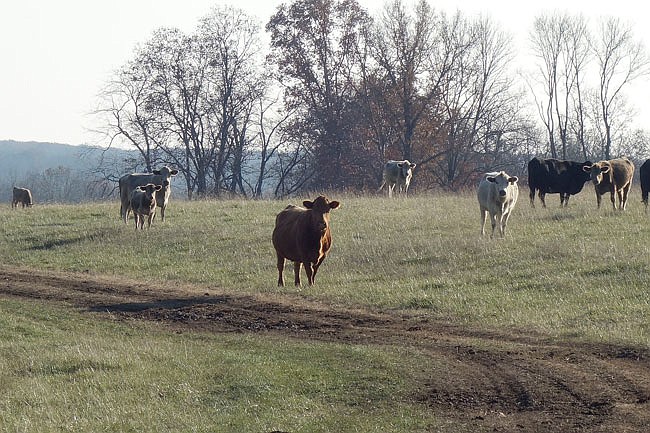JEFFERSON CITY, Mo. - While no part of Missouri is currently impacted by drought, the effects of last summer are still manifesting.
Information about that impact was submitted recently by the Missouri Department of Natural Resources in its 2018 Drought Response Report to Gov. Mike Parson.
The report provides detailed information about the state's response to 2018 drought conditions.
"Shortly after taking office, we witnessed one of the worst droughts we have experienced in many years," Parson said. "As a result of the dedicated teamwork led by the Missouri Department of Natural Resources along with the Department of Agriculture and the Department of Conservation, the state delivered meaningful relief to Missouri's agriculture community and public water supplies."
Callaway County was hit hard by last summer's drought. As a result, livestock producers had tough decisions to make about their herds, and owners of grazing animals such as horses were also affected.
"A lot of soil and water officials are saying the drought impacted our hay supply by 50 percent," said Anita Ellis, livestock specialist with the University of Missouri Extension in Callaway County. "Absolutely we've got a problem for anything that eats hay."
Many farmers feed round-baled hay as pasture forage. That's hitting their checkbooks.
"If you look on Craigslist, it's $80 or $90 for a bale of plain grass hay," Ellis added.
Typically, that same round bale will cost $45 or $55. But last year's summer was so hot that the hay yield was cut by half.
"There's definitely a shortage," she said.
Emergency assistance in various forms was offered to areas of the state suffering from drought conditions.
On July 18, Parson issued Executive Order 18-05, which declared a drought alert for all counties that experienced severe, extreme or exceptional drought conditions. The executive order further directed the DNR to activate and designate a chairperson for a drought assessment committee and requested all Missouri and federal agencies to participate as needed.
On Aug. 8, through the Emergency Conservation Program, Callaway County was approved for emergency funding for farmers and ranchers to rehabilitate land severely damaged and to implement emergency water conservation measures. The report states about $2 million will be dispersed to the 32 counties approved for this funding, which include Cole and Boone counties.
An emergency haying and grazing component also was approved July 16 for Boone, Callaway and Cole counties. The three counties also were eligible for the Livestock Forage Disaster Program providing compensation to eligible livestock producers who suffered grazing losses.
All state agencies were further directed to examine how they could assist affected communities, as well as those communities that may be affected in the future. Assistance was provided through temporary suspension of administrative rules, appropriation or other means of support to mitigate the effects of the drought conditions.
"At the peak of the drought, 98 percent of the state experienced dry to exceptional drought conditions," DNR Director Carol Comer said. "I am extremely proud of state agency staff for having worked together tirelessly, as a team, to help those who needed it most."
With fall rains and improvements in soil moisture, water supplies and livestock forages, the order was allowed to expire Dec. 1. However, people feeding livestock are struggling to get through this winter, harsher than normal - thus requiring more feeding.
"Definitely a lot of beef cattle producers are looking for other options," Ellis said.
She said her two horses have decimated their 8 acres of pasture, and the only hope of getting grass back is to move them off in the spring and pray for regrowth.
"You have to give it a chance to grow," she added.
The Department of Natural Resources' comprehensive drought website served as the central point for information dissemination. The report and related information are available online at dnr.mo.gov/drought.htm.

